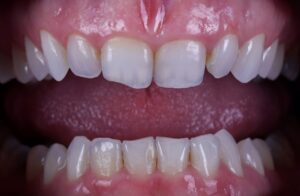Wear or Attrition? How do You Make the Call
When is wear a concern?
Patients who have worn teeth can be some of the most disconcerting. Often we are unsure of when to talk to patients about wear and uncertain about how we treat it and how predictable the results are. I believe that some wear is normal. I base this on the fact that I have very few if any patients who are in their seventies or eighties and still have mammelons on their incisors. Wear is a concern when the amount of tooth structure being lost is out pacing the patient’s age.
Once we have a guide for determining when wear leaves the physiologic category and becomes something we need to discuss with patients, the next step is to understand the cause.

How do we tell the difference?
Both attrition and erosion can cause severe tooth wear, but they pose different long-term risks. Attrition is the loss of tooth structure caused when the patient rubs two tooth surfaces together. Erosion is caused by the presence of acid from issues like GERD and eating disorders. Attrition can be seen in addition to erosion, often giving us a false sense of how much the patient truly parafunctions, as the etched tooth structure wears away more easily. They each have a distinctive appearance that helps us differentiate them.
Attrition:
• Matching facets on upper and lower teeth
• Facets on tooth surfaces that occlude
• Enamel and dentin worn evenly
Erosion:
• Facets may or may not match on upper and lower teeth
• Facets on tooth surfaces that are not in occlusion
• Dentin cupped out and wearing faster than enamel
• Tooth structure is wearing away around restorations that remain unchanged
Once we have a sense of the cause of tooth wear we can then partner with the patient to treat the damage and manage the progression.




